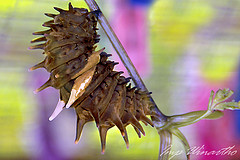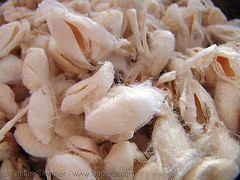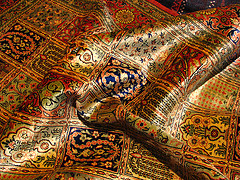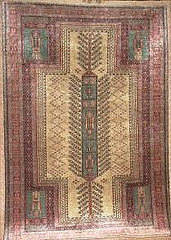Some rug dealers neglect to tell you that the silk Persian rugs they’re selling to you are comprised of artificial silk. This problem happens mostly with carpets coming from those countries that weave both artificial and real silk Persian rugs (IE: Turkey, India, and sometimes Pakistan), but artificial silk rugs are never woven in Iran, and you never find such a thing as a “Persian Artificial Silk Rug“.
Natural, real oriental silk rug is a fibrous protein made up of a number of amino acids. It is produced from the cocoon of the silk worm. To harvest the silk, the cocoons are heated, or boiled to kill the silk worms. Then they’re unwound into single fibers, which are then spun into thread or silk yarns.
When dyed, silk fibers are saturated with rich colors, and have a distinctive, almost translucent luster. Silk is extremely high in tensile strength, exceeding that of nylon. It has been estimated that if a single silk fiber with a diameter of a pencil could be produced, the fiber could lift a 747 aircraft.

Unfortunately, there are transient distributors of low-integrity who sell artificial silk Persian rugs for the same price as real Persian silk rugs. Artificial silk is easily made of mercerized cotton, or rayon fibers. It does not come from the cocoon of a silk worm. Cotton fibers are mercerized by being stretched under controlled tension, at room temperature, while being treated with a caustic soda solution. This causes the fiber to swell, and makes it much more lustrous and reflective. Rayon is made almost entirely of pure cellulose.
It is produced by first dissolving cellulose to a thick yellow liquid, called viscose. The viscose is extruded through tiny holes into a chemical bath that makes long filaments that are spun into thread or yarn. Artificial Persian silk rug is not a long lasting quality fabric, and loses its lustrous shine quickly. Its durability is less than that of wool.
It is Time to TEST..
Look carefully at the silk Persian rug: it should be tightly woven (with more than 200 knots per sq. in., and often with 500 or more knots), intricately detailed, closely clipped, and it should have real silk fringe that is clearly an extension of the rug’s structure, not sewn on or sewn into the ends of the silk rug. Artificial silk oriental rugs often have only medium weaves (less than 250 knots per sq. in., and sometimes less than 150 knots per in.), and often have cotton fringe. Good quality real silk Persian rugs always have real silk fringe. 
OK, you’re looking at a nicely woven, nicely patterned, closely clipped “Persian silk rug or oriental silk carpet” rug with what appears to be real silk fringe. You still might be looking at a rug made of artificial silk. Here are three field tests that might help you distinguish real from fake. No guarantee; your mileage may vary.:)
How to Test a Real Silk Persian Rug?
1. Rub it
It is sometimes claimed that you can tell real silk from artificial silk by vigorously rubbing the pile with your open palm. The real Persian silk rug feels warm, the artificial silk rug stays cool to the touch. We sometimes think we have felt this difference. Of course, it helps to have a real silk rug with you so that you can compare a known quantity!
2. Burn Test
Clip off a small piece of the fringe and burn it. Notice both the appearance of the ash, and the smell of the smoke. If the material is artificial, the ash should be smooth and powdery and the smell should be similar to that of burnt paper. On the other hand, if the sample is real oriental silk rug the ash should be blackened and flaky, and the smell will be reminiscent to the smell of burning hair.
3. Dissolve it!
Last step for test a Persian silk rug.. The most accurate test is one that chemically differentiates protein from cellulose or petrochemicals. One such test: at room temperature, mix a solution of 16 g copper sulfate (CuSO4) in 150 cc of water. Add 8-10 g glycerin, then caustic soda (sodium hydroxide: Na OH) until a clear solution is obtained. This solution will dissolve a small sample of natural silk, but will leave cotton, rayon, and nylon unchanged

To Conclude..
In the professional rug workshops the choice of design styles is normally dictated by the demands of the market, either overseas or locally. The warps and wefts are nearly always cotton or silk and the knot count is usually higher than that of village production. In oriental rug workshops the weaving is carefully supervised by a master weaver who is responsible for every loom under his watchful eye. In these workshops the weavers are following an exact design drawn out on graph paper with all color choices predetermined. Tribal or village Persian silk carpets are often woven in the home with many of the design elements committed to memory. The opportunity for creativity in this arena is much greater.That’s why silk Persian rugs (in other words) their designs are greater than the others
Learn more about decorating with rugs and other flooring materials by following this step by step free online home decorating course. This course will help you discover your creativity for decorating and designing your home to reflect your unique personality and lifestyle.
Return from Silk Persian Rugs to Persian Rugs